Can a smartwatch save your life?
How our wearables are fast becoming important diagnostic aids
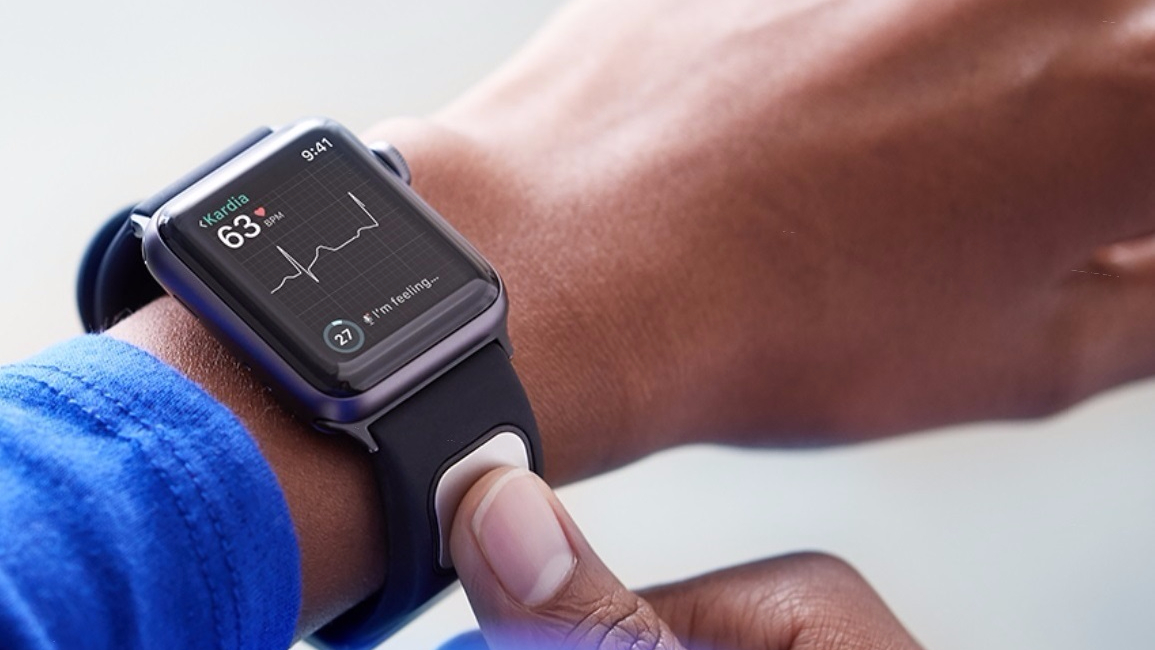
Many of us are used to our wearable devices telling us we need to get more sleep, sending us a little badge for beating our personal best running times or applauding us for hitting 10,000 steps.
But what about a wearable alerting you to a serious health problem that ultimately saves your life?
Thanks to advances in sensors, newly-approved accessories and improved deep-learning software, a future in which our wearables become as important as our doctors isn’t far off.
Last night an Apple Watch saved my life
We spoke to Rachael Fisher, a Customer Service Advisor for recycling company Bywaters, who last year had her life potentially saved by a wearable.
“I decided to randomly check my heartbeat to see what my resting BPM was using the Apple Watch. However, to my shock it was showing it was 140/150bpm (the average is between 70 to 100bpm),” Fisher told us.
“I thought this was a one off, but as the weeks progressed into months, I realized that my heart was never slowing down,” she said. “Because of this, I had a blood test and it became clear that I have an overactive thyroid, so severe that my doctor said I could have had a heart attack at any moment. I am now on beta blockers and other medication which is slowing my heart down, thankfully.”
Fisher’s story is remarkable, but she’s not alone. Similar stories about how a mainstream wearable device has alerted users to an issue that proved life-saving have made headlines in recent months.
Get daily insight, inspiration and deals in your inbox
Sign up for breaking news, reviews, opinion, top tech deals, and more.
For example, in October last year Podcast Producer and Reporter James Green from New York wore an Apple Watch, which prompted him to seek urgent medical attention after it noticed a spike in his resting heart rate. Later he found out it was due to a blood clot in his lungs.
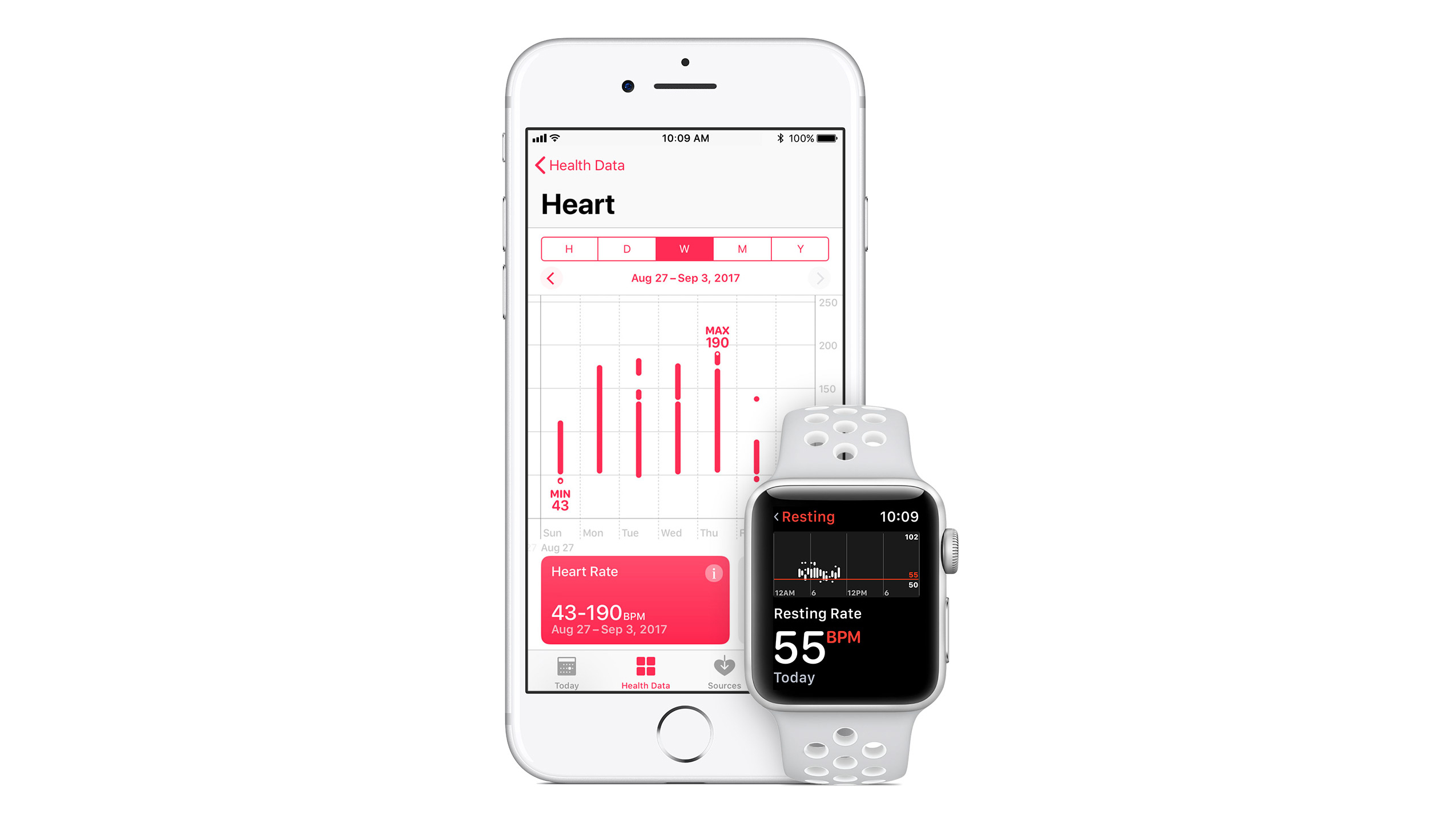
You’d be forgiven for thinking these might be rare incidents. But recent studies have found that the heart rate data collected from devices like the Apple Watch and Fitbit Ionic to be nearly as accurate as a medical grade electrocardiogram test.
So it makes sense that people without previous medical issues are finding out they might have problems they didn’t know about, like an overactive thyroid, irregular heartbeat or a blood clot, with the help of these consumer devices. And it’s likely that as the tech advances, this will become even more common.
From counting steps to saving lives
When wearables first entered the market, the data they collected was fairly simple, including step counting and how often you moved around at night. This was because most devices used an accelerometer, which does a good job at detecting movement but little else.
Fast-forward to the present day and now many devices are fitted with sensors that are able to gather all kinds of data about our health, fitness and lifestyles.
From keeping tabs on your stress levels with respiration tracking via an accelerometer, through to monitoring your VO2 max (the measurement of the amount of oxygen you use up) as you workout to gauge your fitness levels, all bases are covered.
This means they do far more than the souped-up pedometers of the past and in some cases have become as useful and smart as some of the medical-grade tech you’d usually only find in hospitals.
The sensors that are proving to be particularly useful in both telling us more about our health and detecting underlying problems are those that are built to monitor heart rate activity.
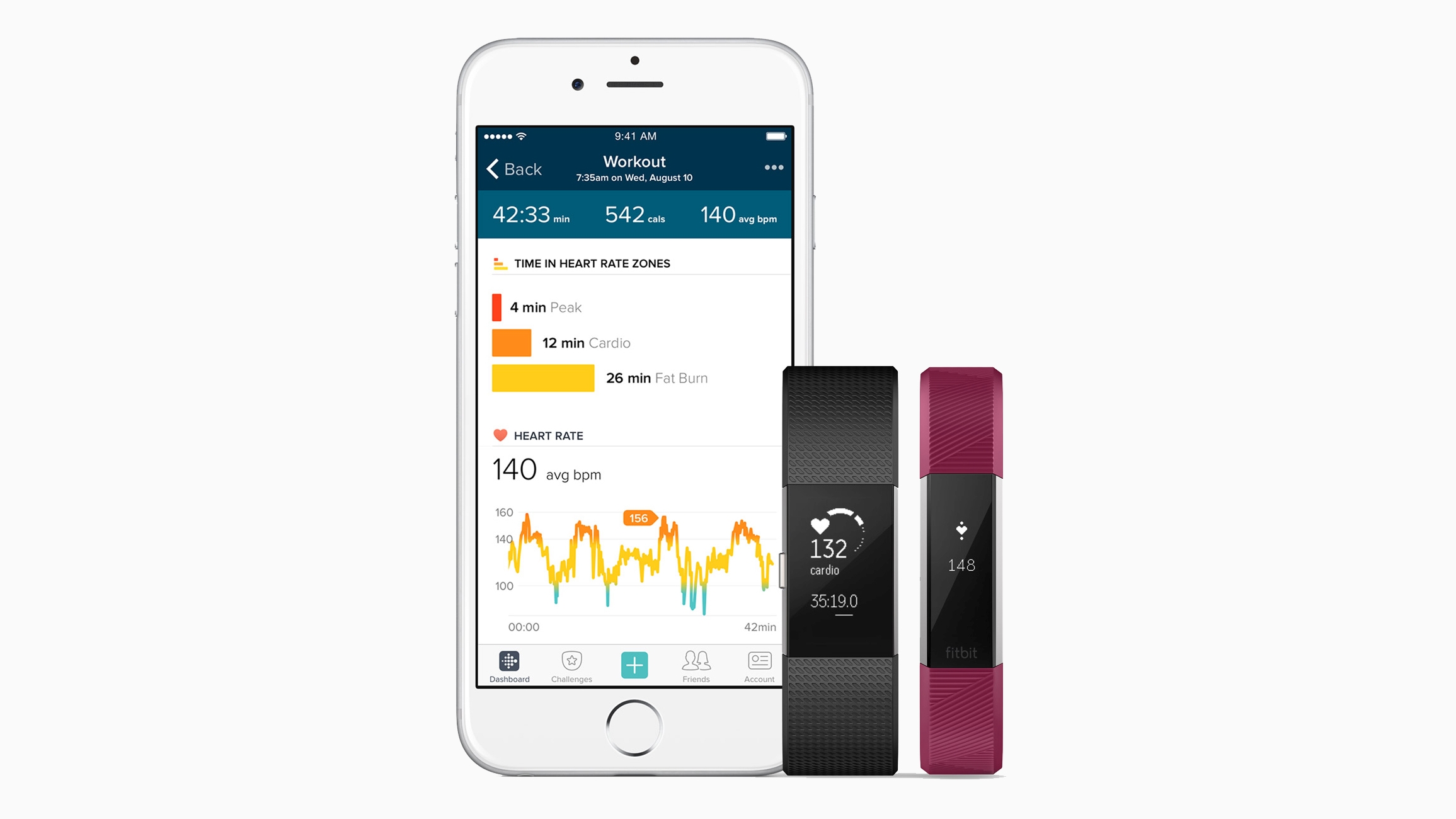
We spoke to Mike Feibus, principal analyst at market insight company FeibusTech, who told us: “In 2017, we finally got to the point that even the worst heart-rate sensors in wearables were pretty decent. That’s an important milestone. Because it means that those companies that develop biometrics could assume a minimum threshold of accuracy.”
We asked Dr Keith Grimes, GP, Digital Health Consultant why heart rate is so important.
“In fitness heart rate monitoring has undoubted benefits for training, but when it comes to heart rate and health it's a little more complicated,” he explained.
“As a doctor, I'm interested in extremes of heart rate (too high - tachycardia, or too low - bradycardia) as well as disturbances of rhythm (arrhythmias). Consumer HR monitors are making claims that they can identify arrhythmias such as Atrial Fibrillation (AF) where the heart beats irregularly. If found early and treated with blood thinning drugs, this can reduce the risk of strokes.”
Monitoring your heart with technology
There are two main ways to get an accurate measure of how your heart is functioning, and they’re known as photoplethysmography (PPG) and electrocardiography (EKG or ECG) technology.
Most wearable devices (especially those worn on the wrist) use photoplethysmography. It works because blood is red, so it reflects red light and absorbs green light. This means by using flashing green LEDs you can accurately detect how much blood is flowing through your wrist.
The more blood, the more green light is absorbed, so you can get an accurate reading of BPM (that’s beats per minute), as well as HRV (that’s heart rate variability), which is the variability in the length of the intervals between heartbeats and can be a good indicator of the health of your heart.
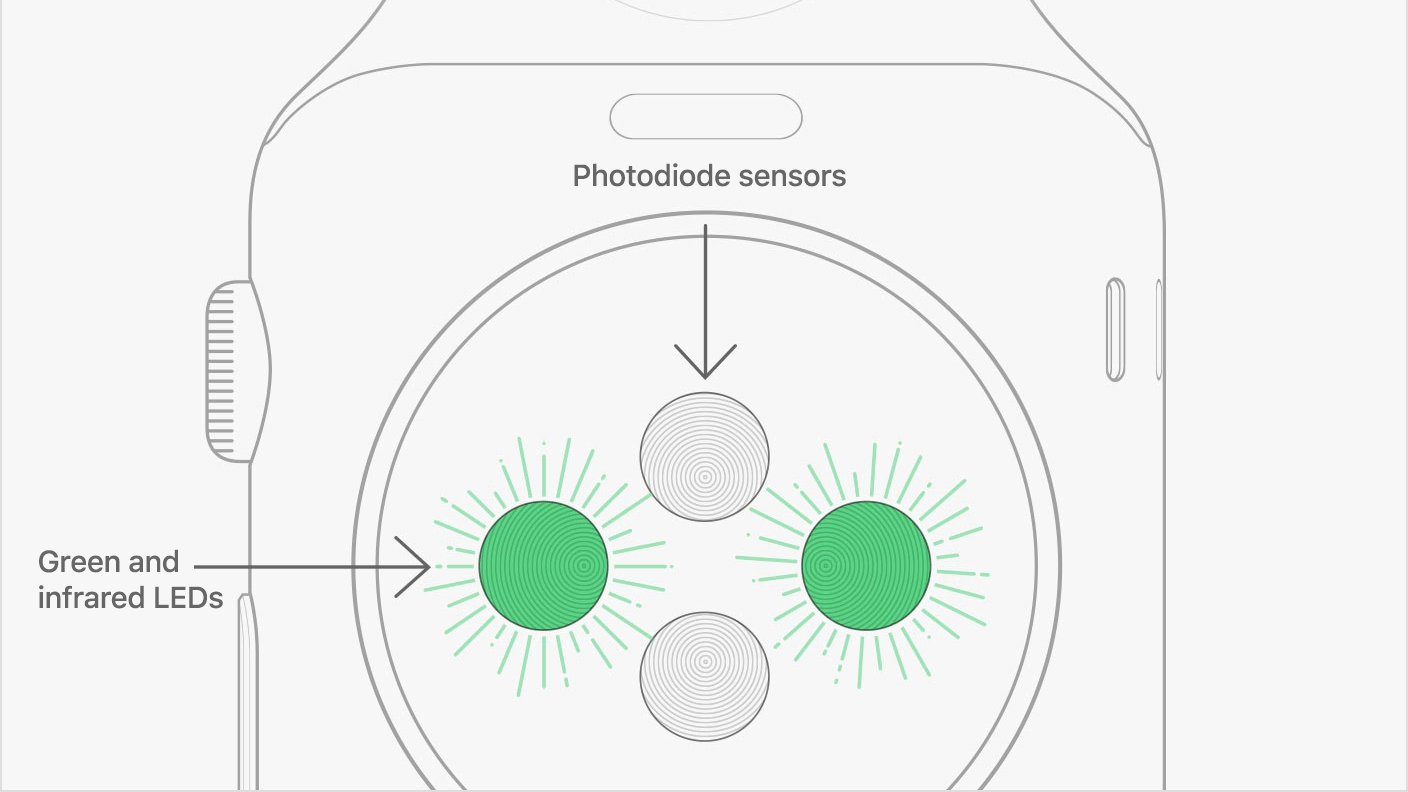
Both Fitbit and Apple, two of the most popular wearable brands with heart rate tracking tech in their devices, use photoplethysmography tech to track heart rate. Plenty of other brands use it too, but not always on the wrist.
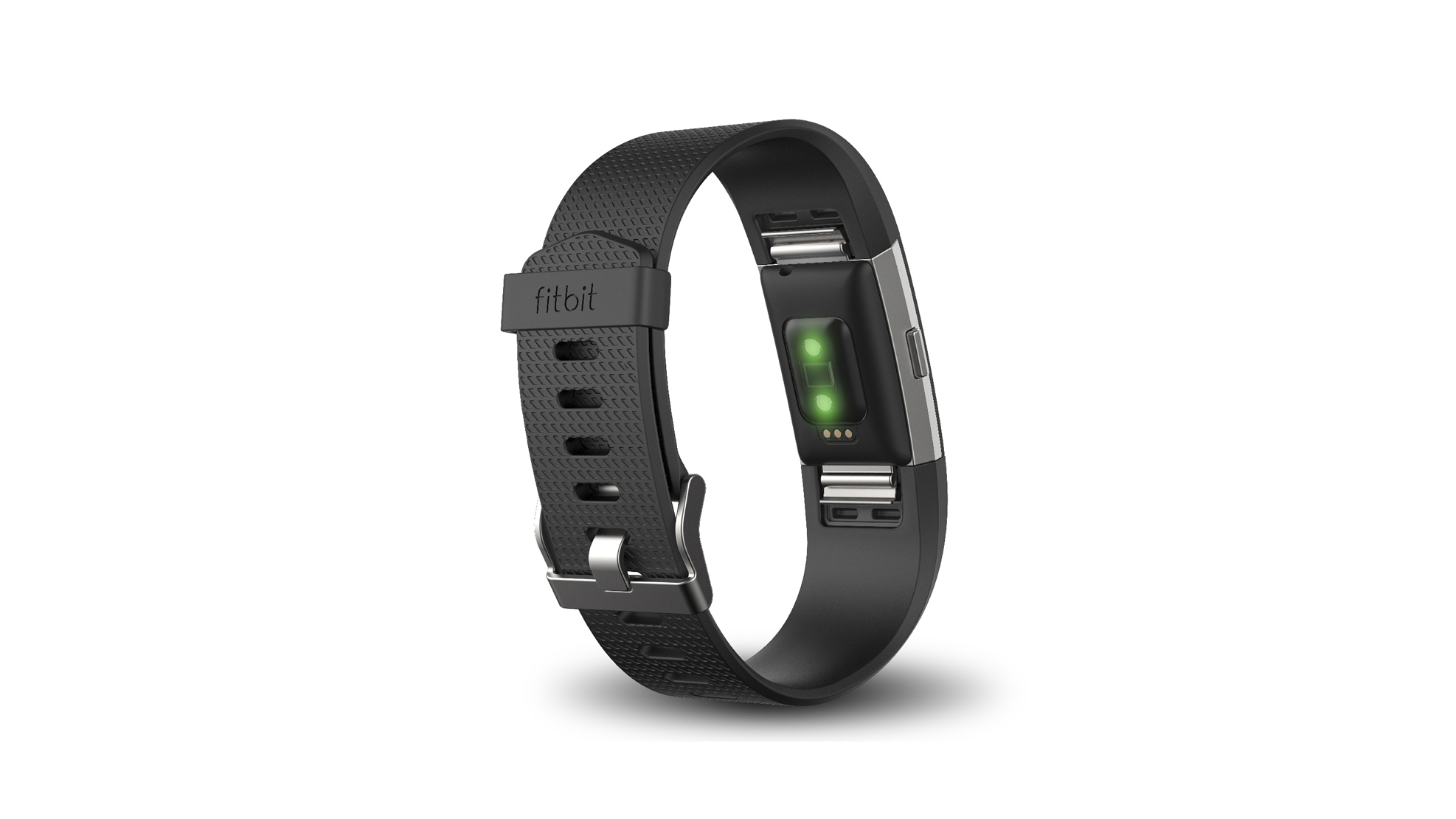
For example, both Polar and Wahoo have PPG armbands that they claim are more accurate based on the position of veins in your arm, and the Moov HR Sweat makes the same argument for being strapped to the side of your head.
Although most wearable companies with heart rate smarts use a similar kind of optical sensor technology, they’re working on improving their algorithms to bring a more useful and accurate view of a user’s fitness.
Let’s not forget there’s long been technology in a medical setting that can track heart rate extremely accurately too. If a doctor or cardiologist wants to get a better look at the way someone’s heart is working they often use an electrocardiography (or ECG) machine.
In contrast to PPG, ECG tech is all about reading electrical signals collected at various points over your body using a series of sensors. These electrical signals provide information about your heart’s rhythm and its electrical activity, which can be used to detect problems like arrhythmias, heart disease or cardiomyopathy.
Although most mainstream wearable devices use PPG, a number use ECG tech, such as the Polar H10 and other chest straps. There are also a number of ECG accessories being manufactured for use with wrist-bound devices, and there’s a good chance Apple will somehow incorporate ECG tech into its Apple Watch in the next version.
There’s a lot of scientific literature that discusses whether PPG or ECG tech is more accurate when detecting heart problems. A 2017 study published in the Journal of the American College of Cardiology found wearable PPG tech to be just as accurate as ECG tech when it came to tracking heart rate and bradyarrhythmias (slow heartbeat), but not as accurate when identifying tachycardia (fast heart beat).
In short, ECG (or EKG) is generally considered more accurate, which makes sense given that consumer-facing wearables using PPG were largely first created to help people achieve fitness goals, not alert them to serious medical conditions.
But ECG equipment can be more cumbersome, more expensive and harder to wear. This means that although PPG isn’t always as reliable, its incorporation into more consumer-friendly devices might still make it highly important, and potentially life-saving.
In the hands of consumers rather than doctors, it’s important to remember that false readings could have much worse consequences.
“We have to be sure that consumer heart rate devices are accurate and that they genuinely help people manage their health,” Dr Grimes told us.
“A good example might be a patient taking beta blocker medication for their heart condition. Should the dose be too high, their heart rate will fall and they may experience side effects. Using a consumer-focused device that is inaccurate in any way might lead to false reassurance or false alarms.”
Using AI to better understand our bodies
But the current sensors alone can only tell us so much. That’s why a number of companies have been working on additional apps, deep-learning software and accessories that make the data collected from sensors more useful by comparing it to averages and past data, and making better predictions.
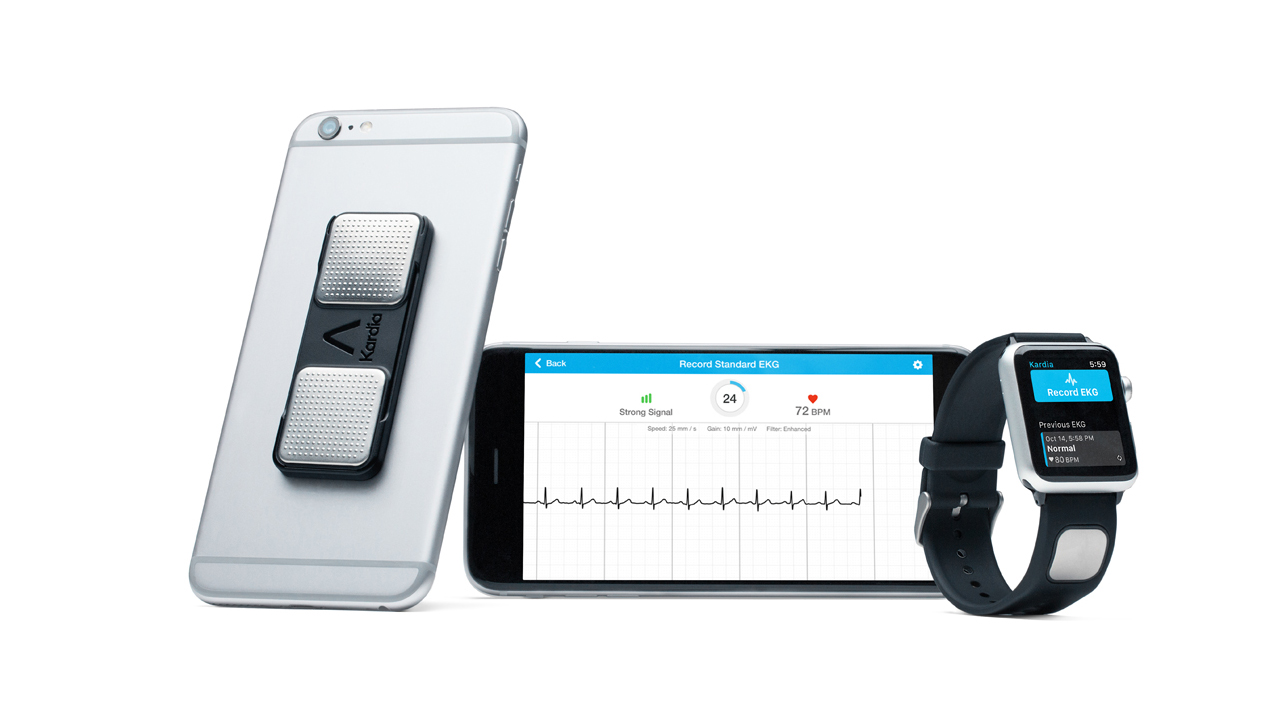
For example, last year the US Food and Drug Administration (FDA) cleared AliveCor’s KardiaBand, making it the first true medical accessory for the Apple Watch. It comprises a watch strap that’s a portable electrocardiogram (ECG) reader.
So far the Apple Watch has proved capable of tracking heart rate using PPG, but what the KardiaBand does is allow your doctor to be kept informed of abnormal beats, as well as atrial fibrillation, by comparing current data with data that’s been observed in the past.
It sounds straightforward, but it could be a huge development, as currently you often only find ECG readers in a doctor’s office.
We spoke to Eric Topol, Executive VP and Professor, Molecular Medicine, The Scripps Research Institute, who agreed the algorithms used by the likes of AliveCor are the most valuable.
“Heart rate sensors by themselves aren’t of much use,” Topol told us. “But they can now be integrated with artificial intelligence - deep-learning subtype - to detect a heart rhythm problem, like atrial fibrillation, which can be a major risk factor for stroke.”
Feibus, of FeibusTech, explained that AliveCor’s tech is a great example of exploiting what wearables can do right now, despite their limitations. “Doctors trust AliveCor because their first product is a pocketable ECG. Hopefully, given its pedigree, AliveCor can inch the medical community in the right direction,” he added.
But extra accessories aren’t always needed. Last year, the team behind the Apple Watch and Android Wear app Cardiogram joined forces with the American Heart Association and found that, using a deep neural network called DeepHeart, data from Fitbit and Apple Watch devices could be used to detect both hypertension and sleep apnea.
“This study is one of the first showing AI can be trained to perform a task doctors can't do - analysing a week's worth of ordinary wearable data, and discerning subtle patterns associated with hypertension and sleep apnea, which are invisible to the naked eye,” Cardiogram’s co-founder Brandon Ballinger told us.
“This lets both artificial and human intelligence play to their strengths - AI sifting through large data sets to discern hidden patterns, and humans delivering care with empathy and nuance.”
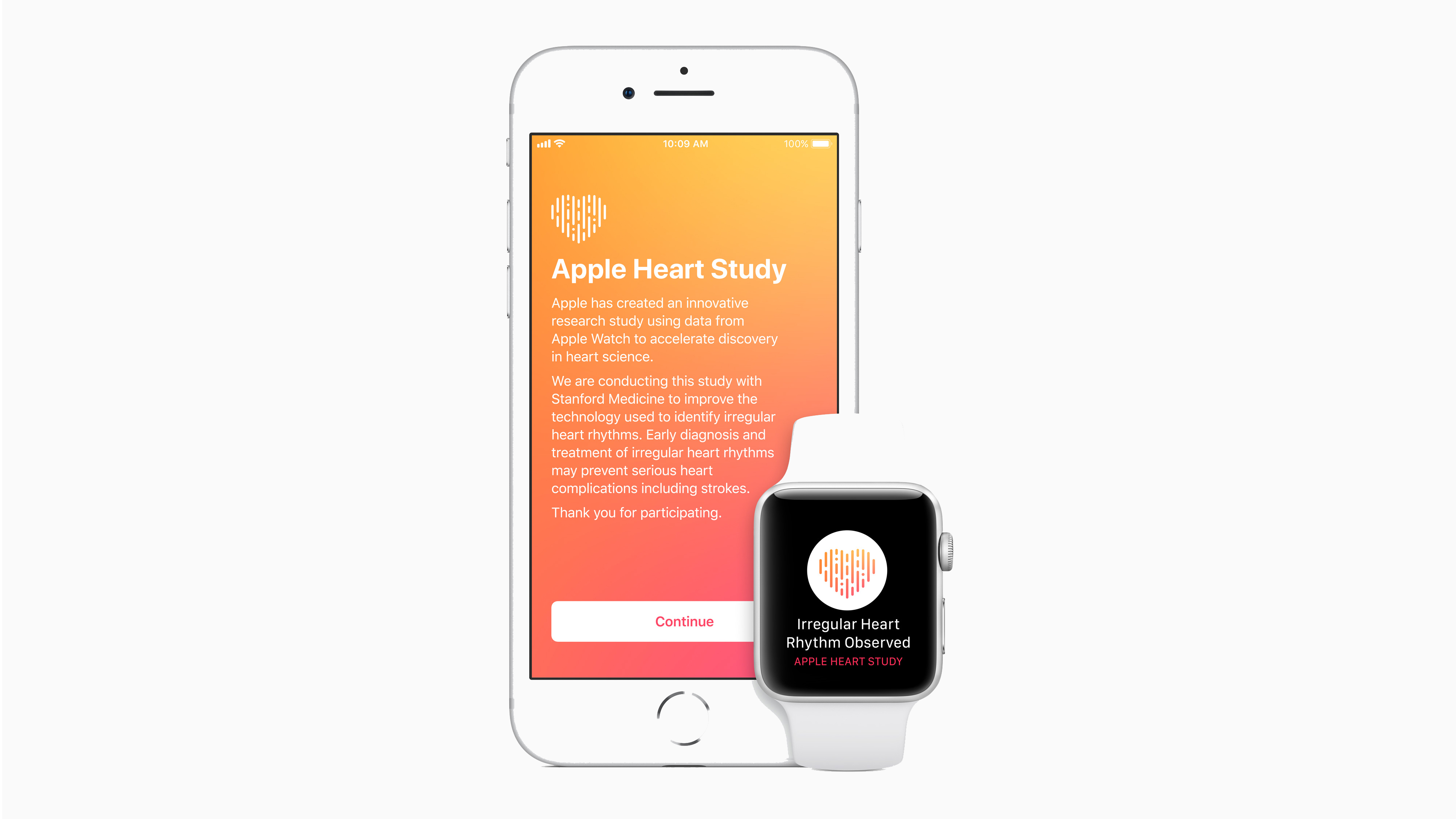
These examples are just the beginning. Apple made its intentions in the health tech space clear late last year, when it announced plans to partner with Stanford Medicine, to collect heart rate data on irregular heart rhythms and notify users who may be experiencing atrial fibrillation.
This move has understandably led many insiders to predict that the tech industry has its sights firmly set on creating products, devices and services that give regular consumers more insight into their own health than ever before.
Dr. Grimes said: “The future will see more use made of sensor technology in smartphones, expanding the range of devices that will not only offer heart rate sensing, but heart rate variability, rhythm detection, and other important measurements like pulse wave velocity, oxygen saturation and respiratory rate.
“Coupled with greater pools of clinical data and the extended reach of machine learning, we could see much earlier identification of disease or adverse reactions to medication.”
Taking your health into your own hands

We’re at an exciting time, with wearables fast becoming important diagnostic tools not just for medical professionals, but for everyone else too.
“Healthcare is evolving, from the paternalistic 'Doctor knows best' of the past to a world where the patient is more in control of their care,” Dr Grimes told us. “Consumer tech is helping to meet the needs of modern patients, but we have to be careful that the promise is matched by accuracy.”
Mike Feibus believes the next challenge will be convincing the medical community there’s great value in wearables. “The biggest challenge is how to integrate insight from consumer-focused wearables into caregivers’ workflow,” he said. “These devices don’t naturally fit into the buckets that healthcare has dictated.”
Grimes added, “If we can find a way to turn the huge amount of data these devices generate into actionable information which can be used by patients and doctors alike, then the future is pretty bright. If we get it wrong, we'll be flooding an already-struggling health service with the ‘worried well’.”
Let’s hope we get it right. That way, as wearable companies work to build more accurate sensors, integrate neural networks that can aid in analysis, and engage with healthcare professionals, those professionals will be better equipped to look after us, and we’ll all be able to keep a closer eye on our health.
Becca is a contributor to TechRadar, a freelance journalist and author. She’s been writing about consumer tech and popular science for more than ten years, covering all kinds of topics, including why robots have eyes and whether we’ll experience the overview effect one day. She’s particularly interested in VR/AR, wearables, digital health, space tech and chatting to experts and academics about the future. She’s contributed to TechRadar, T3, Wired, New Scientist, The Guardian, Inverse and many more. Her first book, Screen Time, came out in January 2021 with Bonnier Books. She loves science-fiction, brutalist architecture, and spending too much time floating through space in virtual reality.
